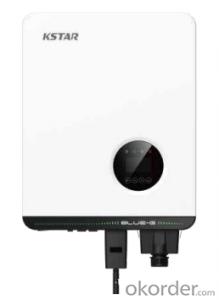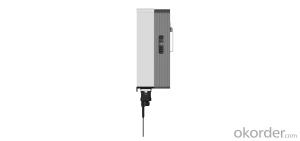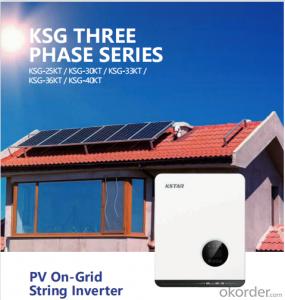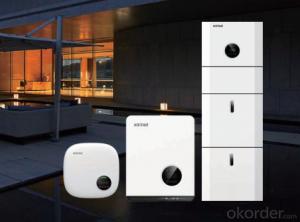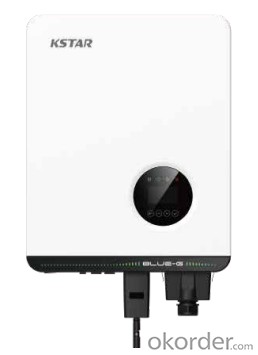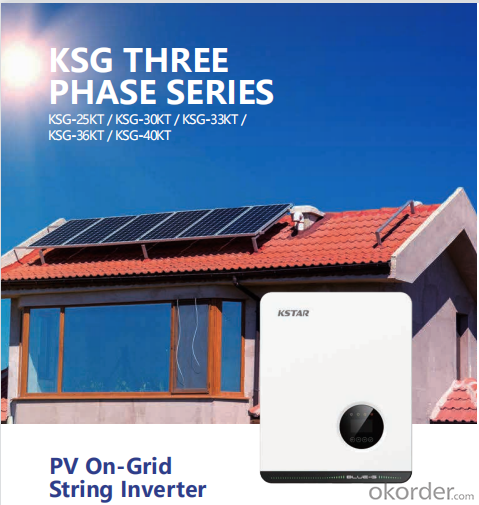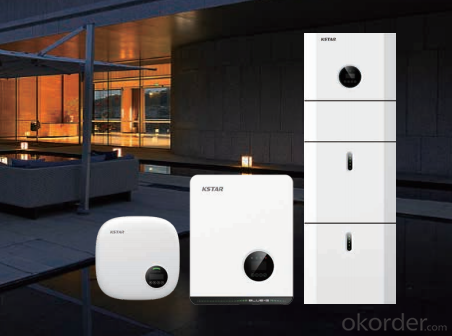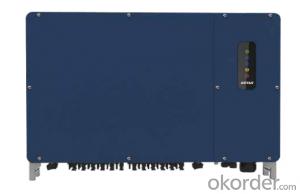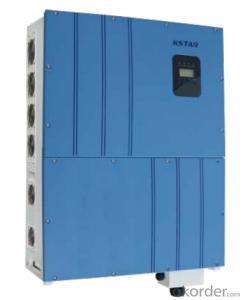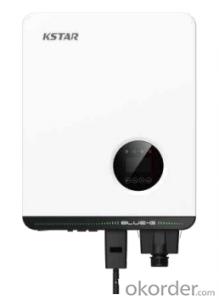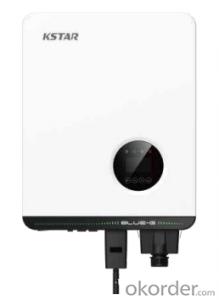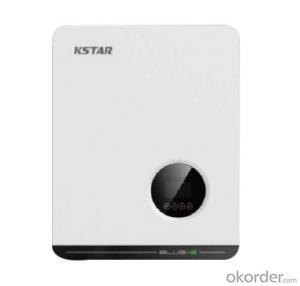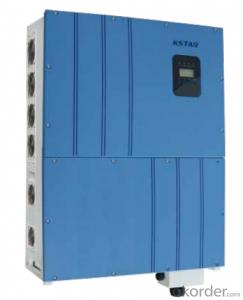Solar Inverter UK PV On-Grid String Inverter KSG-25KT / KSG-30KT / KSG-40KT
- Loading Port:
- China main port
- Payment Terms:
- TT OR LC
- Min Order Qty:
- 50 pc
- Supply Capability:
- 15000 pc/month
OKorder Service Pledge
OKorder Financial Service
You Might Also Like
Specification
Product Description:
★Max. PV voltage up to 1100V Type II DC /AC SPD
★DC/AC ratio up to 1.5 IP66 protection
★High efficiency up to 98.7% Smaller and lighter
★Compatable for big capacity PV panel WiFi / 4G Plug optional
Technical Specifications:
| MODEL | KSG-25KT | KSG-30KT | KSG-40KT |
| Input(DC) | |||
| Max. remonmmended PV power | 37500W | 45000W | 60000W |
| Max. DC Voltage | 1100V | 1100V | 1100V |
| Nominal Voltage | 600V | 370V | 370V |
| Start Voltage | 180V | 180V | 180V |
| MPPT Voltage Range | 200V-1000V | 200V-1000V | 200V-1000V |
| Number of MPP Tracker | 3 | 3 | 3 |
| Strings Per MPP Tracker | 2 | 2 | 2 |
| Max. Input Current Per MPPT | 30A | 30A | 30A |
| Max. Short-circuit current per MPPT | 50A | 50A | 50A |
| Output(AC) | |||
| Nominal AC output power | 25000W | 30000W | 40000W |
| Max. AC output power | 27500VA | 33000VA | 44000VA |
| Nominal AC Voltage | 400V 3L+N | ||
| AC Grid Frequency Range | 50Hz / 60Hz±5Hz | ||
| Max. Output Current (A) | 39.7A | 47.7A | 63.6A |
| Power Factor (cosφ ) | 0.8 leading to 0.8 lagging | ||
| THDi | 3% | ||
| Efficiency | |||
| Max. Efficiency | 98.60% | 98.70% | 98.70% |
| Euro Efficiency | 98.30% | 98.40% | 98.40% |
| Protection devices | |||
| DC Switch | Yes | ||
| Anti-islanding Protection | Yes | ||
| Output Over Current | Yes | ||
| DC Reverse Polarity Protection | Yes | ||
| String Fault Detection | Yes | ||
| AC/DC Surge Protection | Type II | ||
| Insulation Detection | Yes | ||
| AC Short Circuit Protection | Yes | ||
| General Specifications | |||
| Dimensions W x H x D (mm) | 380*483*227 | ||
| Weight(kg) | <35 | ||
| Environment | |||
| Operating Temperature range | –25℃~+60℃ | ||
| Cooling Type | Fan Cooling | ||
| Max. Operation Altitude | 4000m | ||
| Max. Operation Humidity | 0-100%(No Condensation) | ||
| AC Output Terminal Type | Connector | ||
| IP Class | IP66 | ||
| Topology | Transformer-less | ||
| Communication Interface | RS485/WIFI/4G | ||
| Display | LCD | ||
| Certification & Standard | EN/IEC62109-1/2;IEC/EN61000-6-2;IEC/EN61000-6-4; IEC61683;IEC60068;IEC60529;IEC62116;IEC61727;EN50549-1; AS 4777.2;VDE-AR-N-4105;VDE 0126-1-1;CEI0-21; G98;G99;C10/C11;NB/T32004-2018;GB/T19964-2012 | ||
FAQ:
Q:How the output voltage of the PV inverter and the grid-connected voltage are determined
Inverter is the DC power (battery, battery) into alternating current (usually 220V, 50Hz sine wave). It consists of inverter bridge, control logic and filter circuit. Widely used in air conditioning, home theater, electric wheel, power tools, sewing machines, DVD, VCD, computer, TV, washing machine, range hood, refrigerator, video recorders, massage, fan, lighting and so on. In foreign countries
Q:Installation and maintenance of photovoltaic grid - connected inverter
only when the local power sector permission by the professional and technical personnel to complete all the electrical connection before the inverter can be connected.
Q:What is the difference between a PV grid-connected inverter and an off-grid inverter?
Off-grid inverter is equivalent to their own to establish an independent small power grid, mainly to control their own voltage, is a voltage source.
Q:After the PV inverter, how to achieve the same period before the network?
Solar panel simulator: with MPPT function, simulated morning, noon, afternoon, evening, rainy weather, solar panels produced under different conditions in different voltages.
Q:Is the PV inverter a current source or a voltage source?
According to the waveform modulation method can be divided into square wave inverter, stepped wave inverter, sine wave inverter and modular three-phase inverter.
Q:Photovoltaic grid-connected inverter without DC emc how will happen
Solar photovoltaic power generation technology is the use of solar cells, the photovoltaic effect of semiconductor materials, solar radiation can be directly converted into a new type of power generation system, solar energy is a radiant energy, solar power means --- to direct conversion of sunlight Into electricity,
Q:What is the difference between low voltage grid connection and medium voltage grid connection?
For photovoltaic power plants when the power system accidents or disturbances caused by photovoltaic power plant grid voltage drop, in a certain voltage drop range and time interval, the photovoltaic power plant can ensure that non-off-line continuous operation.
Q:Is the grid side of the grid and the inverter?
The grid load side of the grid is the grid. The inverter is an important part of the PV grid-connected system and can not be regarded as an external load. Photovoltaic power generation system is included in both grid and off-grid.
Q:PV grid-connected inverter and independent inverter in the control of what is the difference
The independent inverter in the output voltage phase amplitude of the frequency control is initially set good. Independent inverter, you should refer to off-grid inverter, do not need to consider the grid situation.
Product Images:
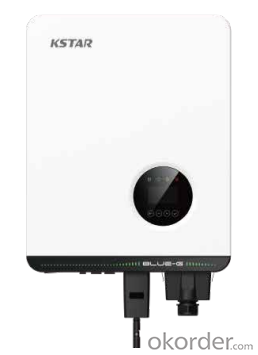
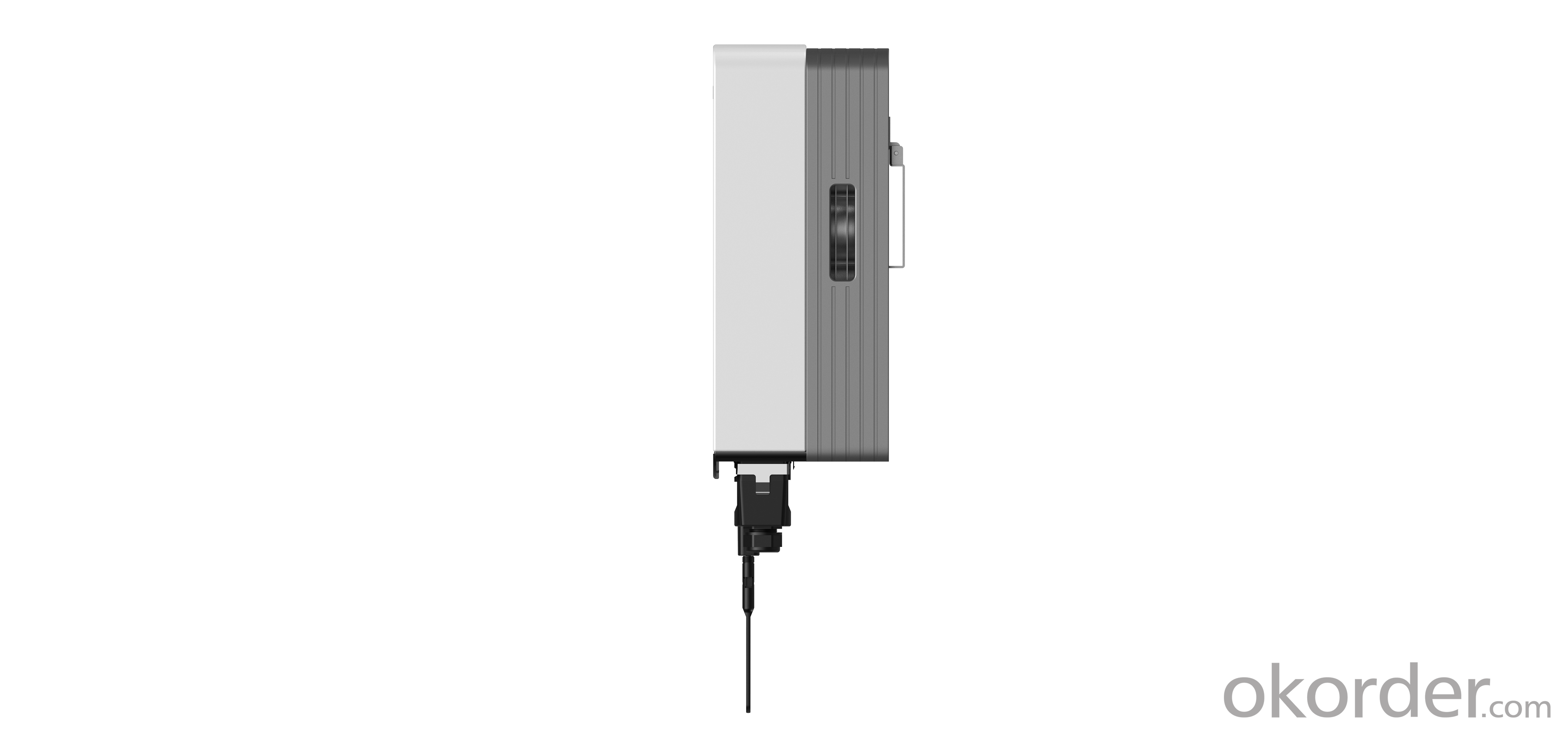

Production Process Photos:
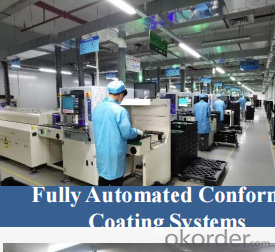
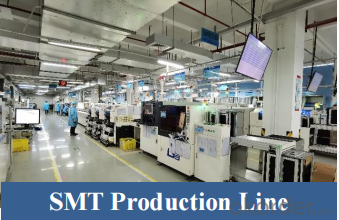
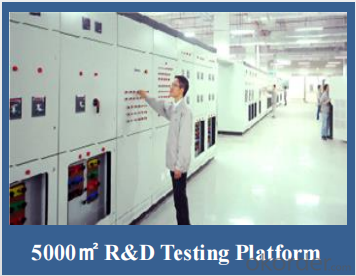
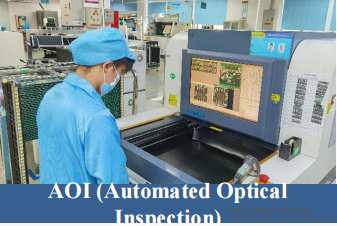
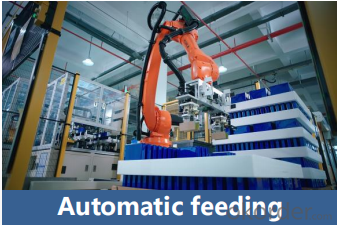
- Q: What are the common maintenance requirements for a solar inverter?
- The common maintenance requirements for a solar inverter include regular inspections to ensure proper functioning, cleaning of the unit and its components to remove dust and debris, checking and tightening of electrical connections, monitoring for any signs of damage or wear, and updating firmware or software as needed. Additionally, keeping the inverter's surrounding area clean and free from obstructions is also important for optimal performance.
- Q: How does a solar inverter handle ground fault protection?
- A solar inverter handles ground fault protection by continuously monitoring the electrical currents flowing between the solar panels and the grid. If it detects any abnormal current leakage to the ground, it quickly shuts down the system to prevent any potential electrical hazards or damage. This ensures the safety of both the equipment and personnel working with the solar installation.
- Q: What is the maximum short-circuit current that a solar inverter can handle?
- The maximum short-circuit current that a solar inverter can handle depends on its design and specifications. However, in general, a solar inverter is designed to handle short-circuit currents ranging from 1.5 to 2 times the rated maximum output current of the inverter.
- Q: Can a solar inverter be used without solar panels?
- No, a solar inverter cannot be used without solar panels. Solar panels are the primary source of energy for a solar inverter, which converts the direct current (DC) generated by the panels into alternating current (AC) that can be used to power electrical devices. Without solar panels, there is no source of renewable energy for the inverter to convert, rendering it useless.
- Q: Can a solar inverter be used with a three-phase power system?
- Yes, a solar inverter can be used with a three-phase power system. In fact, many commercial and industrial solar installations utilize three-phase power systems to effectively distribute and manage the generated solar energy. A three-phase solar inverter is designed to convert the direct current (DC) produced by solar panels into alternating current (AC) that is compatible with the three-phase power grid. This allows for efficient power transmission and utilization of solar energy in three-phase systems.
- Q: How does a microinverter differ from a string inverter?
- A microinverter differs from a string inverter in that it is a small, individual inverter that is connected to each solar panel in a system, whereas a string inverter is a larger inverter that is connected to multiple panels in a series (string). This means that each panel with a microinverter can operate independently, optimizing the power output of each panel, while a string inverter operates based on the performance of the entire string of panels. Microinverters also allow for easier monitoring and maintenance as the performance of each panel can be individually tracked, whereas with a string inverter, any issues affecting one panel can impact the output of the entire string.
- Q: How does a solar inverter handle shading or partial panel obstructions?
- A solar inverter handles shading or partial panel obstructions by employing a technique known as Maximum Power Point Tracking (MPPT). MPPT enables the inverter to optimize the output power of the solar panels by constantly adjusting the operating voltage and current. When shading or obstruction occurs, the inverter automatically detects the affected panels and adjusts their output to minimize the impact on the overall system performance. This ensures that the system continues to generate as much power as possible, even in shaded conditions.
- Q: What is the maximum voltage input for a solar inverter?
- The maximum voltage input for a solar inverter typically depends on the specific model and manufacturer, but it is generally around 600 to 1000 volts for residential and commercial inverters.
- Q: Can a solar inverter be remotely monitored and controlled?
- Yes, a solar inverter can be remotely monitored and controlled. With the advancement in technology, many solar inverters now come equipped with built-in communication capabilities such as Wi-Fi, Ethernet, or cellular connectivity. These features allow users to access and control the inverter's performance, settings, and data remotely through a computer, smartphone, or web-based monitoring platforms. This remote monitoring and control capability provides convenience, real-time updates, and greater control over the solar power system's performance and energy generation.
- Q: What is the role of a solar inverter in preventing overloading?
- The role of a solar inverter in preventing overloading is to monitor the flow of electricity from the solar panels and regulate the amount of power being generated and fed into the electrical grid. It ensures that the solar system operates within its capacity and prevents excessive power generation that could lead to overloading and potential damage to the system or the electrical grid.
Send your message to us
Solar Inverter UK PV On-Grid String Inverter KSG-25KT / KSG-30KT / KSG-40KT
- Loading Port:
- China main port
- Payment Terms:
- TT OR LC
- Min Order Qty:
- 50 pc
- Supply Capability:
- 15000 pc/month
OKorder Service Pledge
OKorder Financial Service
Similar products
Hot products
Hot Searches
Related keywords
